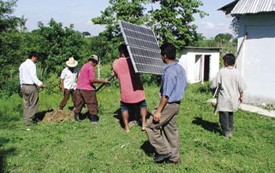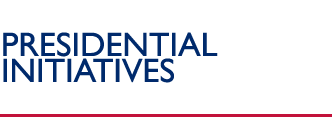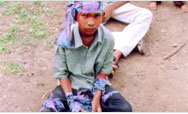 |
Clean Energy Initiative

The Clean Energy Initiative: Powering Sustainable Development from the Village to Metropolis (CEI), announced in
August 2002 at the World Summit on Sustainable Development, works to 1) increase access to modern and affordable energy services in underserved areas; 2) delay the need for new generating capacity by improving the productivity, efficiency, and reliability of current operating systems; and 3) promote cleaner transportation fuels and indoor cooking and heating practices to reduce the estimated 3 million deaths that result from poor air quality each year.
- A CEI program targeted at reducing energy use in municipal water systems resulted in 1) cost savings that allowed a Brazilian utility to connect 85,000 new customers to water and sanitation services; 2) an annual cost savings of $800,000 in Mogale City, South Africa; and 3) a 22 percent energy efficiency improvement in the water system in Veracruz, Mexico, resulting from improved pressure management and reduction in water loss. The Veracruz project resulted in a greater quantity of water going to the end-user and reduced public complaints against the utility from over 100 a month to near zero.
- USAID supported the development of national Global Village Energy Partnership (GVEP) action plans in Sri Lanka, Zambia, Brazil, Guatemala, and Mexico. These action plans provide a framework for implementing programs that will increase access to modern and affordable energy services in underserved areas. For instance, Mexico recently approved a $100 million plan to provide electricity to 50,000 households by 2008.
- In Manila, Philippines, USAID is supporting a Clean Fuels Program that promotes the development and use of alternative clean fuels such as coco methyl ester, compressed natural gas, liquefied petroleum gas, and fuel ethanol. This work has led to a requirement that a 1 percent coco methyl ester-diesel blend be used for all executive and judicial branch vehicles and spurred an order for 100 public utility buses, fueled by compressed natural gas, in Metro Manila.

Providing Power Key to Improving Medical Services in Remote Areas
The lack of electricity in remote areas of Peru complicates the provision of modern healthcare services. Through CEI, USAID has provided funding for solar-powered communication and modern medical equipment to 450 Peruvian healthcare facilities. Radio communication equipment, refrigerators for vaccines, and medical equipment needed for surgery and prenatal and infant care improved medical services to over 225,000 people. As a result of this initiative, children from the remote jungle district of Napo received full immunization in 2004-100 percent are vaccinated against diphtheria, tetanus, and whooping cough, and 81 percent against measles, mumps, and rubella. This substantial increase in vaccination rates has ranked the Napo rural health network as the best in the region in childhood vaccination coverage.
- A primary challenge to accurately characterizing achievements involves the amount of time that transpires between obligation of funds and demonstration of results. If sufficient results cannot be demonstrated after a given amount of time has expired, modifications to implementation schedules are sometimes required. In this particular situation, despite a significant increase in GVEP obligations in FY 2004, the number of beneficiaries did not increase proportionally in a relatively short period of time. Thus, a more realistic implementation schedule was required.
Note: Results for this initiative were reported through USAID's consolidated reporting system
Back to Top ^
|


